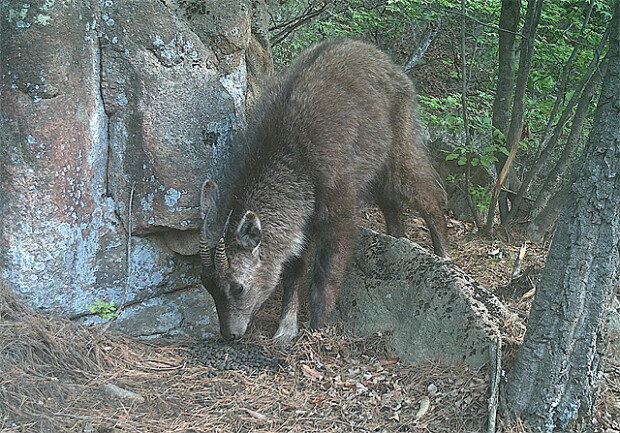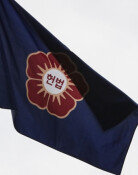No. of mountain goats on Mt. Worak increases from 22 to 100
No. of mountain goats on Mt. Worak increases from 22 to 100
Posted November. 19, 2019 07:39,
Updated November. 19, 2019 07:39

About 100 mountain goats, which are designated as first-class endangered wild animal, are believed to live on the Worak Mountain that is spanning both North Chungcheong Province and North Gyeongsang Province. The Korea National Park Service (KNPS) said on Wednesday that a herd of mountain goats, whose number is sufficient to survive independently, have been confirmed to inhabit the area based on its research since 2017. The number 100 refers to a minimum number required for mountain goats to survive for decades to come.
It was 12 years ago when the KNPS began a mountain goat restoration project. Mountain goats used to inhabit the Worak Mountain but they had never been spotted there since 1982. The KNPS let loose six mountain goats on the mountain in 1995 in order to see if they can survive on their own. When it was confirmed that the number of mountain goats increased to 10 in 2006, the KNPS decided to launch the project in full swing. Starting from releasing five couples of female and male mountain goats, a total of 22 mountain goats had been released on the mountain by 2014. The Worak Mountain provides suitable habitat for mountain goats with its steep rocks and precipitous slopes of over 30 degrees. Every year since 2008, mountain goats have given birth to one or two babies.
The number of mountain goats has continued to rise but there was no way to find out how many more of them there were other than the first 22 mountain goats released with position reporting devices attached to their bodies. So the KNPS thought of installing motion detection cameras. A total of 80 camerasㅡone camera within radius of every one kilometerㅡ were installed at the mountain in 2017, and the cameras took about 4,000 photos of mountain goats for two years.
The Korea National Park Institute for Biodiversity Conservation under the KNPS compared the photos one by one and sorted them out. Like human beings, mountain goats look different to one another. To tell the differences among the mountain goats, the staff looked at the direction and angle of the horns, the shape and the darkness of the black hair on their faces, and the rings on the horns that tell how old they are. “It has taken a tremendous amount of manpower,” said Son Jang-ik, head of the Korea National Park Institute for Biodiversity Conservation, smiling. It took two years to confirm that there are a total of 100 mountain goats on the mountain.
Some mountain goats left the Worak Mountain and moved to different places. The KNPS found out that one male mountain goat moved 40 kilometers toward the Songni Mountain and settled there in 2016. Another male mountain goat moved 20 kilometers toward the Sobaek Mountain and settled there in 2017, raising a possibility of broader habitats for mountain goats.
kej09@donga.com
Headline News
- Med professors announce intention to leave hospitals starting Thursday
- Bridge honoring Sgt. Moon Jae-sik unveiled in Pennsylvania
- Chief of Staff Chung tells presidential secretaries to stay away from politics
- US FTC bans noncompete agreements
- N. Korea launches cyberattacks on S. Korea's defense companies







